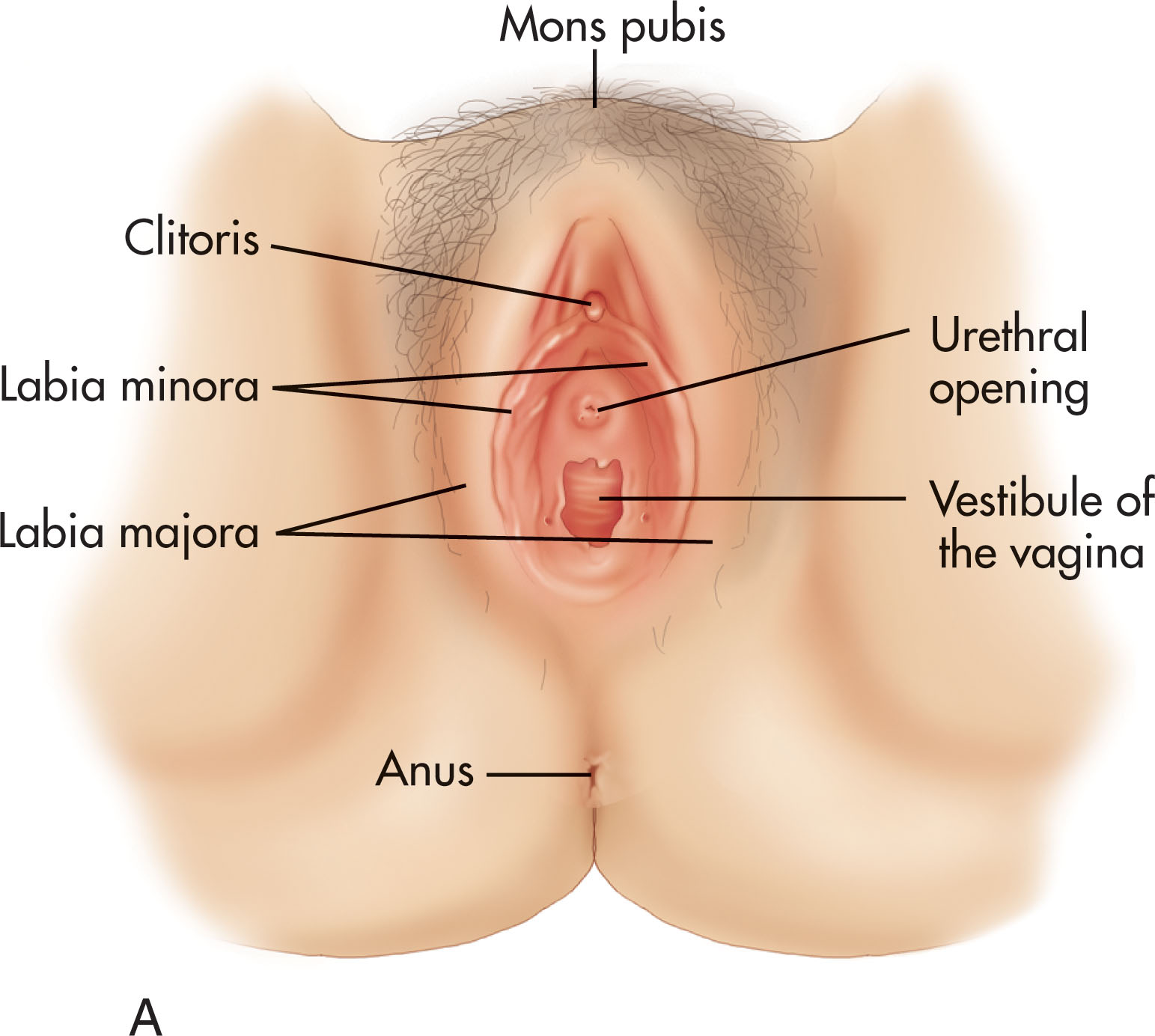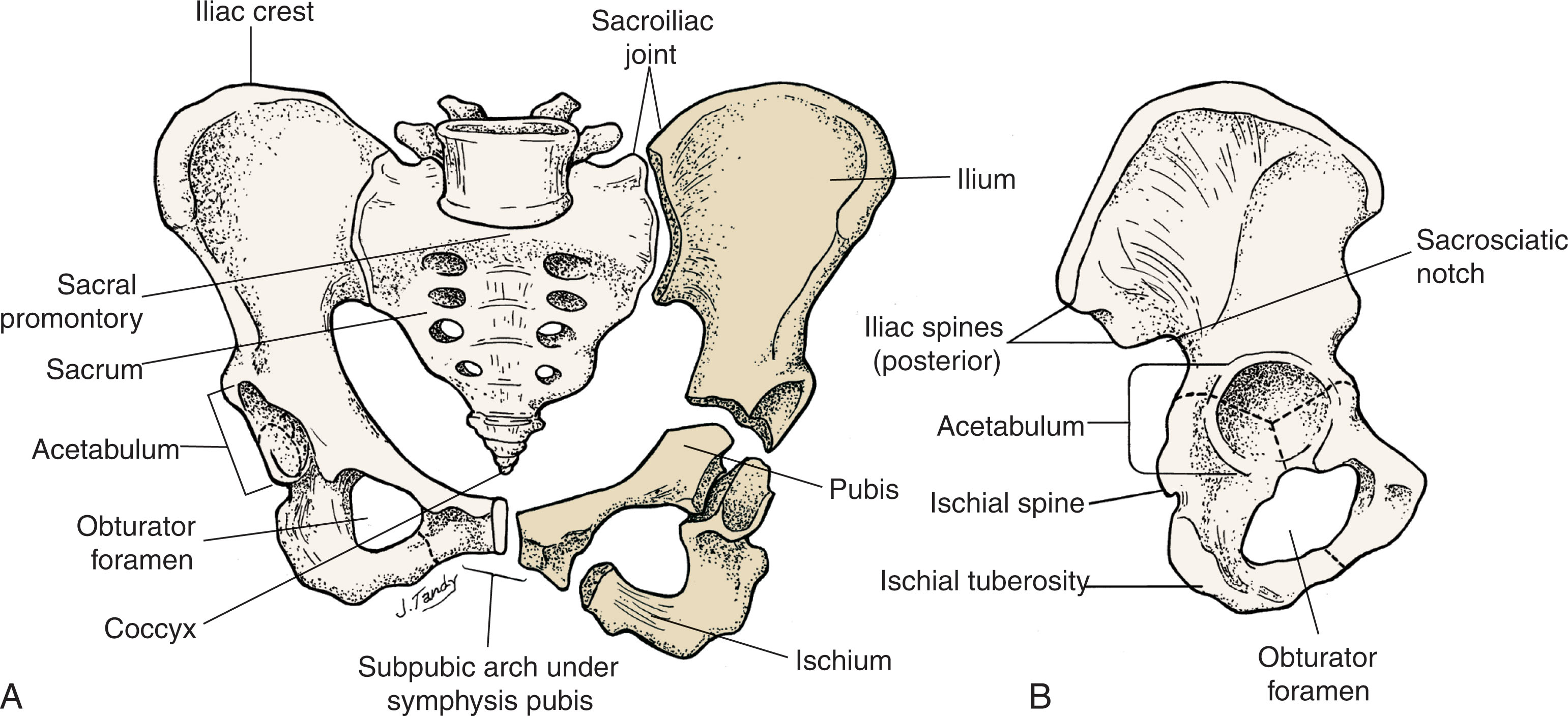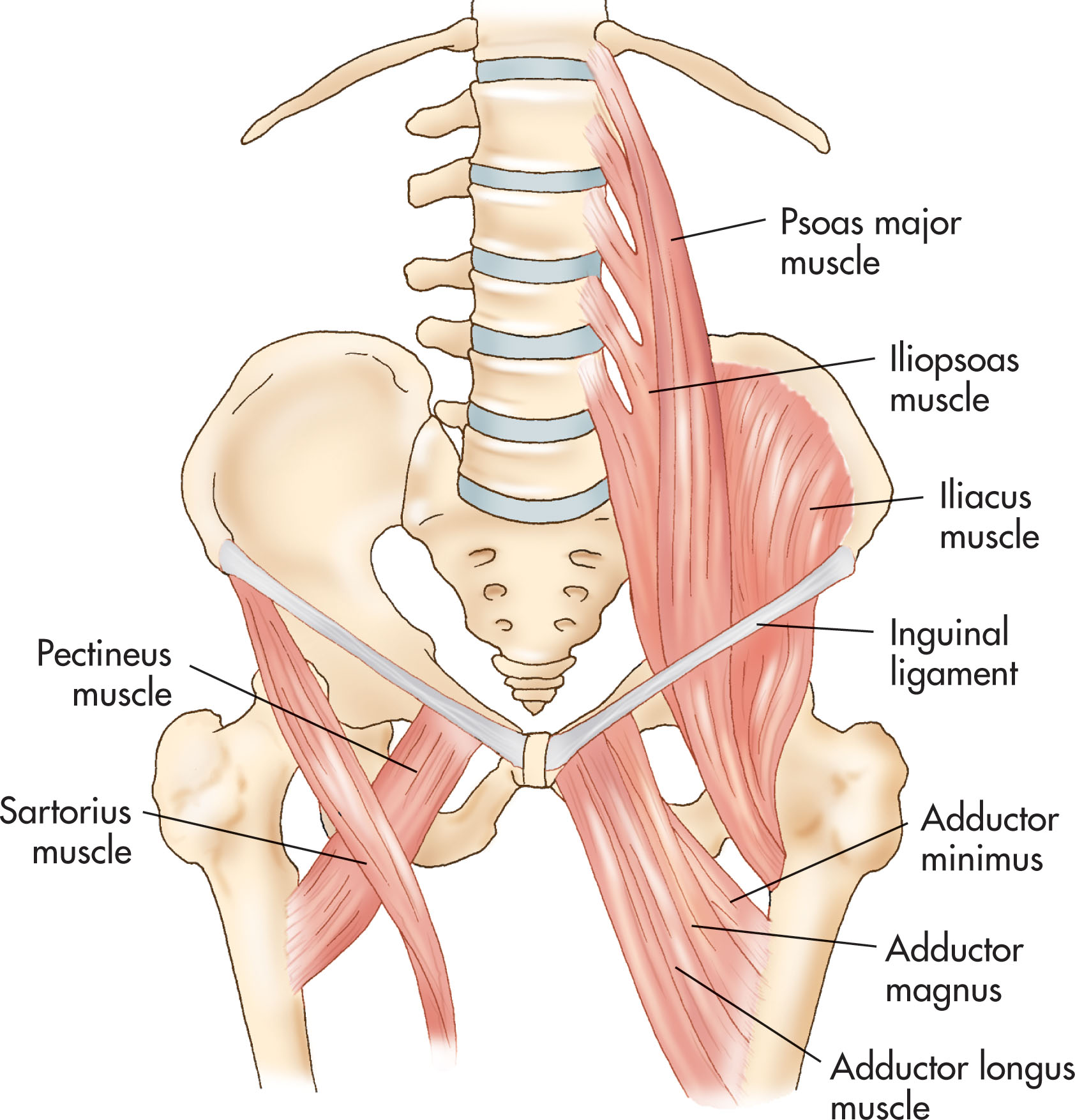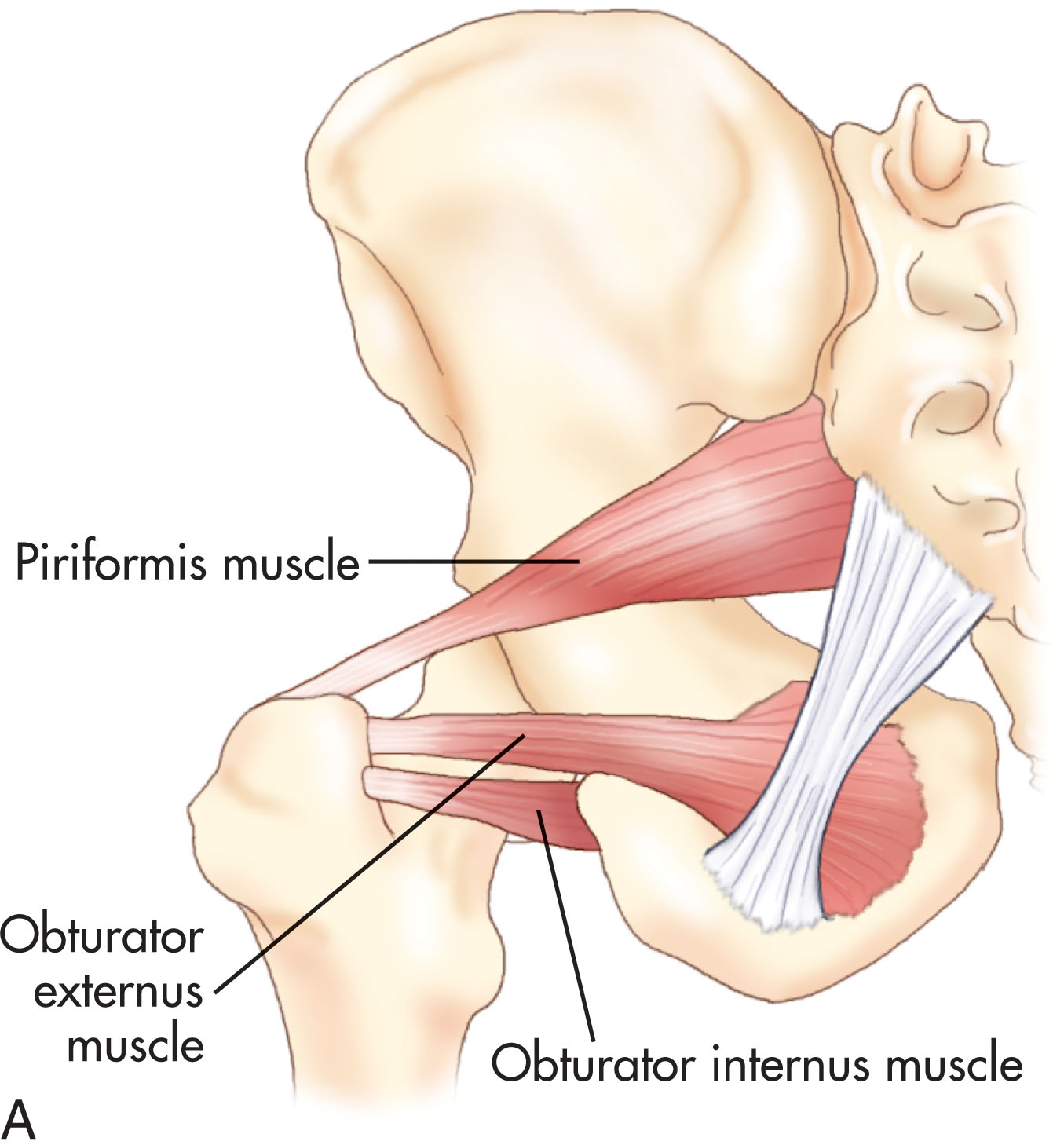Physical Address
304 North Cardinal St.
Dorchester Center, MA 02124
On completion of this chapter, you should be able to:
Name the major landmarks of the bony pelvis and external genitalia
Identify the sonographically significant muscles of the pelvic cavity
Describe the pelvic organs and their functions
Describe the major ligaments of the uterus and ovaries
Discuss the physiology of the menstrual cycle and describe hormonal changes that occur during the various ovulatory and endometrial phases
Describe the development of the ovum and its passage from the ovary into the uterus
Define the function of the corpus luteum
Understanding the anatomy and physiology of the female genital organs is important for understanding the pathophysiology of the female pelvis. Many pelvic landmarks, ligaments, and muscular structures within the pelvis are important to know in order to differentiate normal reproductive organs from muscular and vascular structures ( Fig. 41.1 ). This chapter presents a discussion of the normal anatomy and physiology of the female genital organs. The sonographer needs to know the significant muscular structures and pelvic ligaments because a basic understanding of these structures is essential for performing an adequate pelvic ultrasound examination.
Two approaches are used to evaluate the female pelvis sonographically: transabdominal and transvaginal. A transabdominal approach requires a full urinary bladder for use as an acoustic window and typically necessitates the use of a 3.5 to 5 MHz transducer for adequate penetration. A transvaginal examination performed with an empty bladder allows the use of a higher-frequency transducer, typically 7.5 to 10 MHz. It is generally recommended that a complete pelvic examination should consist of a transabdominal scan followed by a transvaginal examination. The transabdominal scan offers a wider field of view for a general screening of the pelvic anatomy. The transvaginal examination will usually offer a more detailed study of the pelvic structures and organs but is limited in its field of view and depth of penetration. The approach used will depend on the patient’s age and sexual status. Transvaginal examinations are typically contraindicated in minors who are not sexually active. Transvaginal examinations are not contraindicated for the non–sexually active adult female who has had a previous gynecologic examination or has used tampons and consents to the procedure.
When using a transabdominal scanning technique, a distended urinary bladder is optimal. An adequately filled bladder will tilt the uterus posteriorly and push the bowel up and out of the pelvic cavity into the lower abdominal cavity, making visualization of the uterine fundus and adnexa easier. An overly distended bladder, on the other hand, will often push the uterus too far posteriorly, making the pelvic structures difficult to see. An overdistended bladder may also cause compression and distortion of the pelvic organs. If the bladder appears overly distended, throwing the pelvic structures too deep, it may be necessary to have the patient partially or fully void. Because overdistention can alter the true lie of the pelvic organs, it is advised to look at the pelvis from a variety of windows—full, empty, and transvaginally—before making a final assessment.
When transvaginal ultrasound is used to evaluate the pelvic structures, the patient should empty her bladder completely before the transvaginal transducer is inserted into the vaginal canal. With the urinary bladder empty, the uterus and iliac vessels become the primary landmarks used to evaluate and image the pelvic organs.
The external genitalia in the female, also known as the vulva or the pudendum , consist of the mons pubis, labia majora, labia minora, clitoris, urethral opening, and vestibule of the vagina ( Fig. 41.2A ). The vagina itself is the part of the female genitalia that forms a canal from the orifice through the vestibule to the uterine cervix. It is behind the bladder and in front of the rectum. These external structures are important to recognize when using translabial and transvaginal scanning techniques. The mons pubis is a pad of fatty tissue and thick skin that overlies the symphysis pubis and is covered by pubic hair after puberty. The labia are folds of skin at the opening of the vagina, with labia majora being the thicker external folds and labia minora being the thin folds of skin between the labia majora. The clitoris is located anterior to the urethra and is usually partially hidden between the labia majora. Posterior to the clitoris, the urethral opening and vestibule of the vagina can normally be identified between the labia minora. The most posterior orifice is the anus.

The bony pelvis consists of four bones: two innominate (coxal) bones, the sacrum, and the coccyx. The innominate bones make up the anterior and lateral margins of the bony pelvis, and the sacrum and coccyx form the posterior wall. Anatomically, the pelvis is divided into two continuous compartments (true and false pelvis) by an oblique plane that passes through the pelvic brim. ( Fig. 41.2B ) This plane of division passes from the superior border of the sacrum to the superior margin of the pubic symphysis and corresponds to the iliopectineal line ( Fig. 41.2C ). The false pelvis , also known as the greater or major pelvis, is located above the brim. The false pelvis communicates with the abdominal cavity superiorly and with the pelvic cavity inferiorly. The true pelvis , also known as the lesser or minor pelvis, is the area below the pelvic brim.
The true pelvis, situated inferior to the caudal portion of the parietal peritoneum, is considered the pelvic cavity ( Box 41.1 ). The posterior wall of the pelvic cavity is formed by the sacrum and coccyx, and the margins of the posterolateral wall are formed by the piriformis and coccygeus muscles ( Fig. 41.3 ). The anterolateral walls of the pelvic cavity are formed by the hip bones and the obturator internus muscles, which rim the ischium and pubis ( Fig. 41.4 ). The lower margin of the pelvic cavity, the pelvic floor, is formed by the levator ani and coccygeus muscles and is known as the pelvic diaphragm. The area below the pelvic floor is the perineum.
Posterior: occupied by rectum, colon, and ileum
Anterior: occupied by bladder, ureters, ovaries, fallopian tubes, uterus, and vagina


The sonographer must be able to identify several primary muscle groups in the pelvis. These muscles serve as landmarks that may be used to help differentiate the reproductive organs and should be recognized sonographically to prevent misidentifying the muscles as a mass ( Box 41.2 ). Pelvic muscles vary in shape but typically appear hypoechoic with characteristic hyperechoic striations when viewed in their long axis. The pelvic muscles are easiest to locate and identify sonographically if classified by region. The major pelvic muscles can be differentiated as muscles of the abdominal wall, those running through the false pelvis, and those found within the true pelvis.
Psoas major: pelvic sidewall
Iliacus: pelvic sidewall
Piriformis: posterolateral wall
Obturator internus: anterolateral pelvic sidewall
Levator ani: pelvic floor (diaphragm)
Coccygeus: posterior pelvic floor (diaphragm)
The muscles of the anterior abdominal wall extend superiorly from the xiphoid process to the symphysis pubis inferiorly. These muscles include the paired rectus abdominis muscles anteriorly and the external oblique, internal oblique, and transversus abdominis muscles anterolaterally.
Muscles of the false pelvis include the psoas major and iliacus muscles (see Fig. 41.4 ). The psoas major muscles originate at the transverse process of the lumbar vertebrae and descend inferiorly through the false pelvis on the pelvic sidewalls. In the false pelvis, they join with the iliacus muscles to form the iliopsoas muscles. The iliopsoas muscles pass anterior to the hip and insert into the lesser trochanters on the posterior aspect of the femurs. Note that the iliopsoas muscles pass outside the pelvic bones and do not enter the true pelvis.
The muscles found within the true pelvis include the piriformis muscles, obturator internus muscles, and muscles of the pelvic diaphragm ( Fig. 41.5 ). The piriformis muscles are flat, triangular muscles that arise from the anterior sacrum and pass through the greater sciatic notch on the posterior aspect of the innominate bone to insert into the superior aspect of the greater trochanter of the femur. The obturator internus muscles are triangular sheets of muscle that arise from the anterolateral pelvic wall and surround the obturator foramen. They pass out of the pelvic cavity through the lesser sciatic foramen, where they insert into the superior aspect of the greater trochanter of the femur. The pelvic diaphragm is formed by the levator ani and coccygeus muscles and makes up the floor of the true pelvis (see Fig. 41.5C ). The levator ani is a group of three muscles that extend across the pelvic floor like a hammock. This group of muscles consists of the pubococcygeus muscles, the iliococcygeus muscles, and the puborectalis muscles. The pubococcygeus muscles are the most anterior and medial of the three levator ani muscles. They extend from the pubic bones anteriorly to the coccyx posteriorly and surround the urethra, vagina, and rectum. The iliococcygeus muscles extend from the anterolateral pelvic wall to the coccyx posteriorly. The puborectalis muscles arise from the lower part of the pubic symphysis and surround the lower part of the rectum, forming a sling. The levator ani, in addition to forming the floor of the pelvis, has an important role in rectal and urinary continence.

Become a Clinical Tree membership for Full access and enjoy Unlimited articles
If you are a member. Log in here